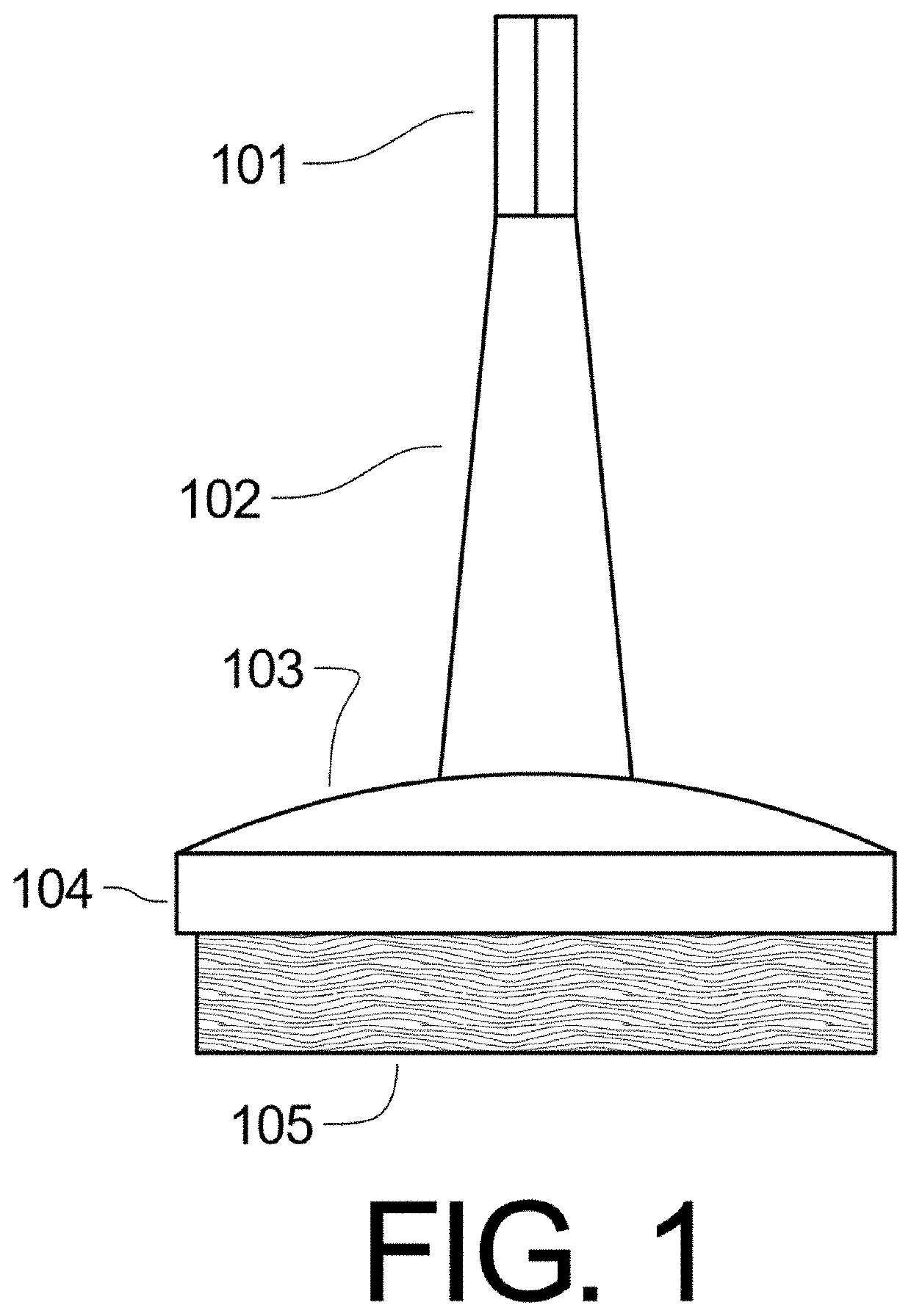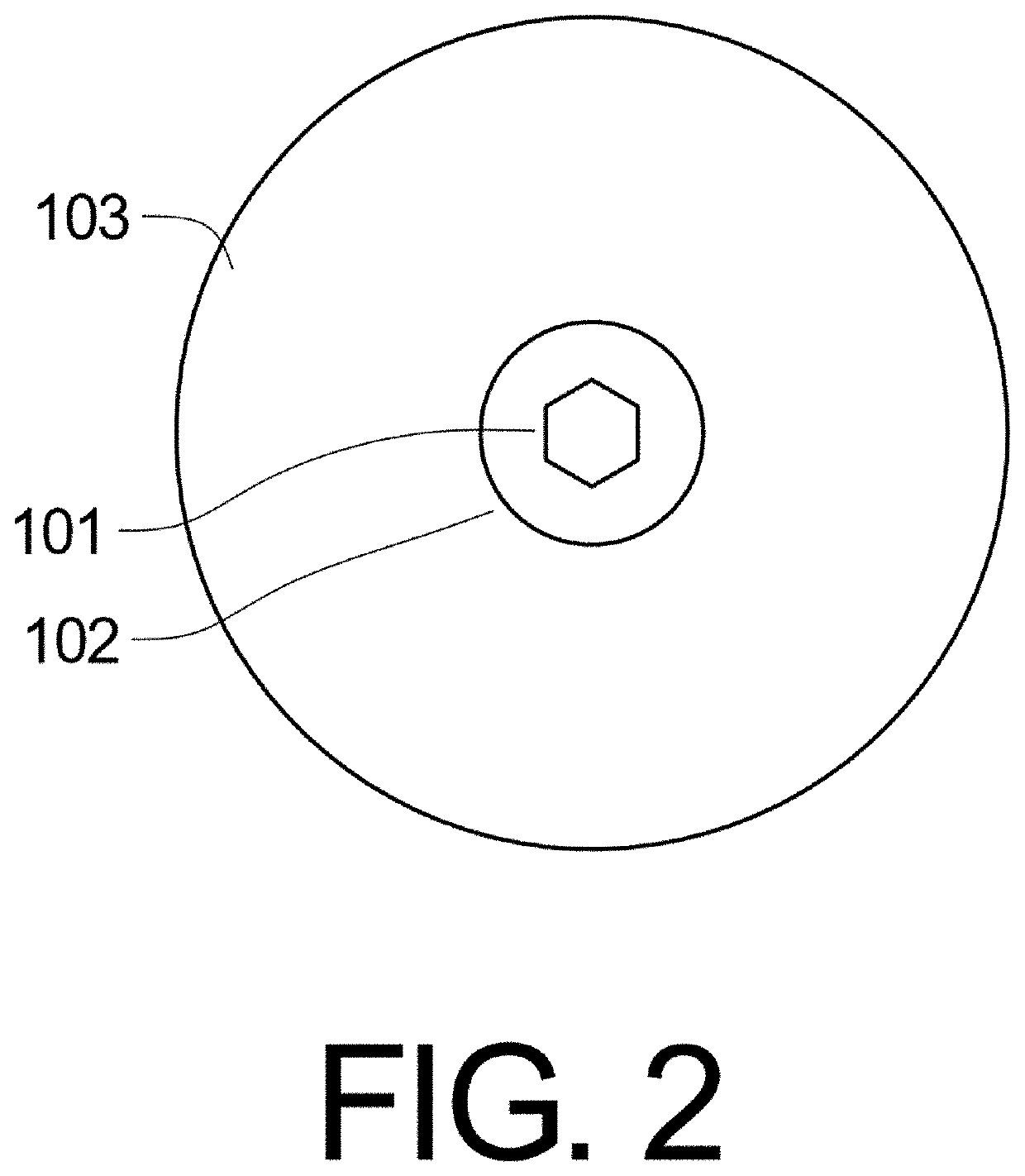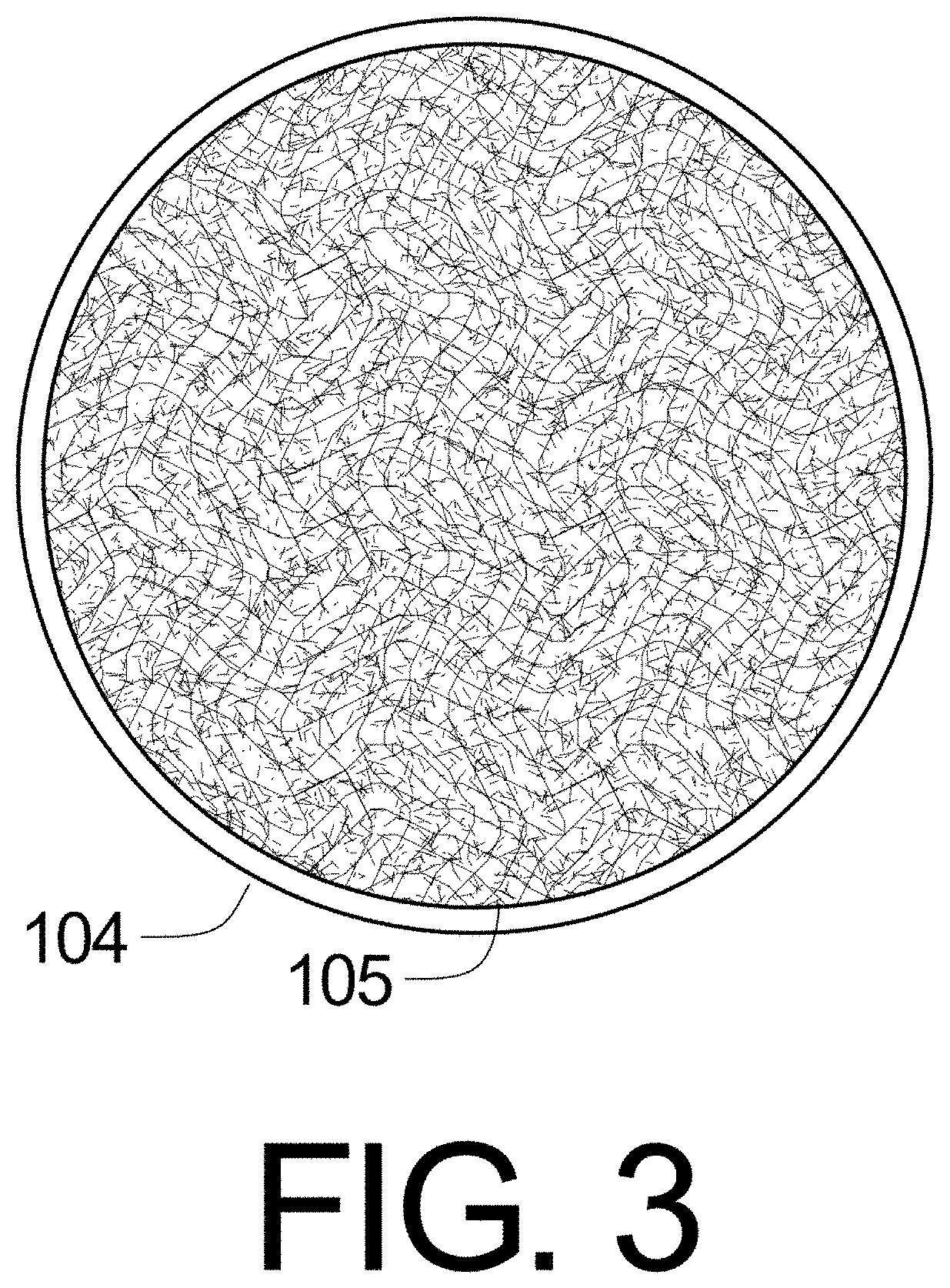Rotary cleaning tool for commode surfaces
a cleaning tool and commode technology, applied in the field of cleaning tools, can solve the problems of hard water ions creating unsightly and unappealing lines on the surface of porcelain commodes, affecting the cleaning effect of commodes, and affecting the cleaning effect of commodes, and achieves the effect of significant compressive strength
- Summary
- Abstract
- Description
- Claims
- Application Information
AI Technical Summary
Benefits of technology
Problems solved by technology
Method used
Image
Examples
Embodiment Construction
[0018]FIG. 1 shows a front view of the rotary brush scrubbing tool. A hex end 101 is used to connect the end of the rotary brush scrubbing tool to a motorized drill or similar piece of equipment. The hex end is rigidly connected to a tapered shaft 102, which in turn, is rigidly connected to an outer cup 103. The outer cup 103 is connected to a shroud 104 which surrounds an abrasive pad 105.
[0019]In FIG. 1, the tapered shaft and outer cup are preferably hollow and capable of receiving a filling / binding epoxy (not shown) that will be used to adhere the abrasive pad. The epoxy is preferably a two-part epoxy with an adhering strength of at least 1,500 psi.
[0020]Even though the rotary tool in FIG. 1 is described as individual parts, in production the entire part is preferably made from an injection molding machine in one piece for economic efficiency and for better connectivity without stress breakage.
[0021]The abrasive pad is preferably a Butyl pad with a bonded diamond grit paste (petr...
PUM
 Login to View More
Login to View More Abstract
Description
Claims
Application Information
 Login to View More
Login to View More - R&D
- Intellectual Property
- Life Sciences
- Materials
- Tech Scout
- Unparalleled Data Quality
- Higher Quality Content
- 60% Fewer Hallucinations
Browse by: Latest US Patents, China's latest patents, Technical Efficacy Thesaurus, Application Domain, Technology Topic, Popular Technical Reports.
© 2025 PatSnap. All rights reserved.Legal|Privacy policy|Modern Slavery Act Transparency Statement|Sitemap|About US| Contact US: help@patsnap.com



